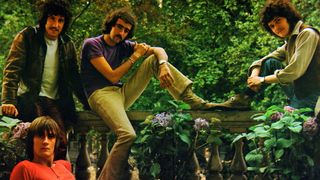This article first appeared in The Blues #3, September 2012.
When you think about the blues capitals of the world, you think of Chicago, for sure. The Mississippi Delta, definitely. Less recognition tends to fall on 3b Godstone Road, Kenley, Surrey.
But that’s where a young and fanatical devotee of the music named Mike Vernon, a couple of years into a job with Decca Records, achieved the extremely unlikely feat of getting one of his heroes to record, and set into motion the story of Britain’s most influential and wide-reaching blues label.
On November 29, 1964, Vernon and fellow disciple Neil Slaven were at that very semi-detached, suburban-sounding address, switching their Grundig machine to record and capturing two tracks by one of the greats. Hubert Sumlin, no less, guitarist in Howlin’ Wolf’s legendary band, taped Across The Board and Sumlin Boogie for a 45rpm single, in a pressing of just 99 copies, which became Blue Horizon 1000.
“The discs will sell at 8/6d [about 43p] each plus one shilling for post and packing,” ran the advertisement in the February 1965 edition of R&B Monthly. With that release, Blue Horizon was born. The label – which would not only nurture some of the great blues names from America over the next five years, but also introduce new stars of its own – was up and running.
Between 1965 and 1970, Blue Horizon would release some 70 singles and 60 albums – all now highly collectable – that took blues music to a wider audience in the UK, and indeed internationally, than any other British company has since managed.
If the label had only given the world Fleetwood Mac, Blue Horizon’s place in history would be assured. But it also housed Chicken Shack (featuring Stan Webb and later Mac mainstay Christine McVie, née Perfect), Savoy Brown, Aynsley Dunbar, Duster Bennett and early Yardbird ‘Top’ Topham, and gave a home from home to American stars who might otherwise have been overlooked during those years, such as Bukka White, Otis Spann, Otis Rush and Champion Jack Dupree.
Now, more than 40 years later, the Blue Horizon imprint lives again. Under the auspices of Sire Records founders, famed A&R man Seymour Stein and producer Richard Gottehrer, the label has been reactivated with such releases as rock‘n’roll original Dion DiMucci’s excellent current tradition-drenched set, Tank Full Of Blues.
In the UK, its future is invested in hotly-tipped rhythm and blues-fuelled London band Scoundrels, whose upcoming second album is due to appear on Blues Horizon in the new year. And as a measure of the indelible mark made by the original company in its golden heyday, you can believe Scoundrels’ lead singer Ned Wyndham when he says: “It’s a real honour to be on Blue Horizon, given the heritage.
“There is a pressure, because it’s like a real British legacy label. It’s like being part of a regiment, or something,” he laughs. “You want to make sure you continue that legacy in the right way.”
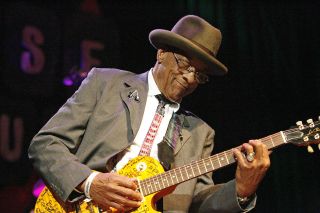
“Between 1967 and 1970,” wrote Mike Vernon in his 2008 sleeve notes to ‘Top’ Topham’s complete collection of sessions for the label, “Blue Horizon created an industry niche for itself that may never be surpassed. The odds of a British blues label surviving, let alone thriving, as a commercially run operation back then, would have been strongly stacked against such an event.
“That such a label might have had any major chart success would have been seen as extremely doubtful – bordering on delusional. But top ten entries and even a No.1 chart topper? No way!”
Topham, who had been the Yardbirds’ first lead guitarist at the age of just 15 and was followed into that role by Eric Clapton, recorded many brilliantly nimble guitar performances for Blue Horizon, often with his lifelong friend Duster Bennett on vocals or harmonica. Topham, an accomplished interior designer and painter more widely known these days by his first name Sanderson, remembers the shared conviction of those in and around the label.
“It was a collective of people whose heart was in that music,” he says. “We lived, ate and slept the blues. It was a very powerful thing in our lives.”
Vernon’s work at Decca, coupled with his obsessively expert knowledge of the blues, stood him in good stead when, barely out of his teens, he and brother Richard started to think about having their own label. After Blue Horizon started, but before its licensing deal with CBS Records opened the door to mainstream success, Mike would record many movers and shakers on the burgeoning blues circuit. He co-produced the Yardbirds’ first-ever demo session with band manager Georgio Gomelsky, and would have passed into folklore if he had done no more than produce the famed “Beano” album Blues Breakers, by John Mayall with Eric Clapton.
“The fact was,” says Topham, “he had the skills and he was employed by Decca, before the blues days, as a pop guy. So he could get into studios, and get to artists, and he said, ‘I want to start recording for myself.’
“I was a voracious collector of blues records; there was a circle of people that were, including Mike,” Topham continues. “Any blues record that came out at that time, I knew about. It began for me in 1961, 1962, when I was a very young teenager. You must realise that nothing was said about this stuff, you had maybe 12 records you could buy. Mike was an enthusiast in that area.”
The emphasis was on spreading the music, not making money from it, certainly in those formative days of the “fanzine” label. Blue Horizon 1000 was followed by further releases of just 99 copies (100 would have incurred purchase tax), including several licensed directly from American labels.
Blue Horizon took pleasure in “reissuing” material from earlier decades and spreading it across Surrey and beyond: Woodrow Adams from 1955, Drifting Slim from 1952, Jimmy McCracklin from 1959. A sister imprint, Outa-Site, brought in a Larry Williams and Johnny ‘Guitar’ Watson single from the pair’s own Jola label in Los Angeles. The connection was direct: earlier that year, Vernon had produced them for Decca.
A third label, Purdah, was added in 1966, and there were even unrealised plans for a fourth, gospel imprint, Wheel. Vernon was already engendering devotion from some of the stars of British blues, and was able to record and release Mayall and Clapton’s Lonely Years single, backed with the instrumental Bernard Jenkins. It became Blue Horizon’s biggest seller to date.
“Both John and Eric had embraced our dream of a small independent UK blues label,” wrote Vernon, who was still combining his Blue Horizon hobby with his Decca day job. “Their insistence in wanting to record these titles for us was most gratifying.”
Less gratifying was the intransigence of Decca Records when Vernon, his interest piqued by the news that Peter Green was leaving the Bluesbreakers to form a new band, began to suggest the idea of a subsidiary label within the mighty major.
No such deal would be entertained, and with the producer feeling ever more constrained, he and brother Richard started talks with rival CBS about a similar idea. On October 3, 1967, they got themselves a deal. Blue Horizon, as Vernon himself put it, “became of age.”
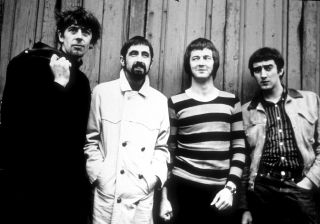
With its new, distinctive light blue label and the use of CBS’ recording studios in New Bond Street, Blue Horizon took its bow in the big time in January 1968 with Chicken Shack’s It’s Okay With Me Baby. It didn’t chart, and neither did the newborn Fleetwood Mac’s first single, I Believe My Time Ain’t Long. But as the buzz from their debut performance at the Windsor Jazz & Blues Festival in the summer of ’67 showed, crossover was getting close.
Fleetwood Mac’s self-titled debut album, with its celebrated “dog and dustbin” cover – designed, like so many Blue Horizon sleeves, by Terence Ibbott – was recorded over just two days. But its remarkable success demonstrated the depth of both the British public’s appetite for the blues, and the band’s extraordinary strength in depth.
Peter Green’s exquisite lead lines were superbly complemented by joint lead vocalist Jeremy Spencer’s slide, to the backbone of John McVie’s bass and Mick Fleetwood’s drums, bringing life both to standards like Robert Johnson’s Hellhound On My Trail, Elmore James’ Shake Your Moneymaker and, crucially, new material such as Spencer’s My Heart Beat Like A Hammer and Green’s brooding I Loved Another Woman and Looking For Somebody.
The public was enamoured. They wanted British blues, and they didn’t need a hit single to get into it, either. The album peeped into the UK chart at the end of February, three weeks later hitting No. 6 and then, in May, peaking at No. 4, rubbing shoulders with bestsellers by Bob Dylan, Otis Redding and Scott Walker. It was still in the chart as 1968 neared its end.
Green’s majestic Black Magic Woman and cover of Little Willie John’s Need Your Love So Bad, neither of them on that first album, both nudged the UK top 40. “I can remember being in the studio with Duster Bennett when they brought out Need Your Love So Bad out,” says ‘Top’ Topham. “I don’t think Mike had put the strings on it yet. We thought, ‘That is a fabulous record.’”
Forty years later, Mac’s uncannily intuitive feel for the real heart of the blues was still weaving its spell. “When I was 15,” says Ned Wyndham of modern-day label flagbearers Scoundrels, “my then girlfriend gave me a Fleetwood Mac box set, The Complete Blue Horizon Sessions, and I literally was obsessed with it.
“I lose most things, and the only surviving CDs from then are that box set. I still have it in my car. People always say it’s imitation, but I don’t think it is. When Peter Green sings Green Manalishi and Jumping At Shadows, he really did have a tough time, and he’s so brilliant. To get that mix of commerciality and respectability, few people can do it.”
That early Mac material has a wonderful vivacity to it, but it would all become too much for Peter Green. Talking to me in 2008, Green, delicate of disposition after all of his well-publicised problems, said: “It wasn’t fun, it was work. It’s your pastime and your mode of expression.”
By the end of January, the band’s conquest of Britain was complete, as a low-key blues guitar instrumental topped the Marmalade’s Ob-La-Di Ob-La Da to win the singles crown, on the way to a million sales within a few months. The Albatross had landed.
‘Top’ Topham says that Mac’s success was never in danger of dwarfing the label’s other work, because like-minded musicians were everywhere in London.
“It was just another thing that was happening. You must remember, seeing Jimi Hendrix wandering up the Charing Cross Road going in and out of guitar shops, and Paul Kossoff. It was like the norm, it was nothing exceptional. You’d go to the pub down the road and Led Zeppelin were there.”
Blue Horizon was now expanding in all directions, entering into what was supposed to be an exclusive recording agreement with New Orleans blues trooper Champion Jack Dupree (exclusive until it transpired he was moonlighting with the Vogue label). Into the picture, as an international partner, came Seymour Stein and Richard Gottehrer, just starting to build their Sire Records empire.
“When Mike Vernon asked if we would get involved with them,” Stein tells me, “I said ‘Mike, it would be like the blind leading the blind.’ But I helped him. I took a real shine to him.
“Mike produced all the records, and where I was helpful to him was in licensing old blues artists from labels like Chess and Excello. But he said to me, ‘Seymour, I just like making records. I hate the business.’”
Indeed, Vernon busied himself with many field trips. “I spent most of my waking hours in the studio or travelling to widely flung destinations,” he recalled, “in an attempt to sign new and viable acts for the fast-growing label.”
These new signings included Curtis Jones, from Texas, and Welsh-born one-man-band Duster Bennett, who served with distinction until his death in a car crash in 1976.
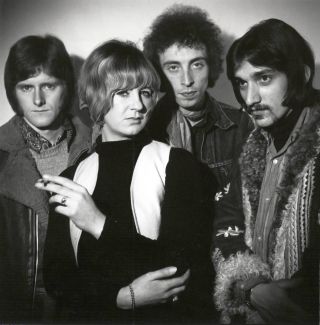
As the label’s roster reached far and wide across the blues spectrum, its domestic mainstays remained strong, racking up record sales and impressive chart positions. Chicken Shack hit the top 20 in 1969 with their timely cover of Etta James’ US R&B hit a few months earlier, I’d Rather Go Blind, and the top 30 with the follow-up, Tears In The Wind.
Mac, meanwhile, were touring in the States, including support slots with BB King. They followed another Top 10 album, Mr. Wonderful – their first to feature Christine Perfect, lead singer on that Chicken Shack hit – by convening at Chess Studios with such titans as Willie Dixon and Buddy Guy for Blues Jam At Chess.
It would not only be their last out-and-out blues release but, as it transpired to the label’s horror, their last for Blue Horizon, as manager Clifford Davis exercised their freedom to go elsewhere by signing with Immediate, and then Warner Brothers.
Blue Horizon continued with releases by bands such as Key Largo, Bacon Fat and Jellybread, but there was a change on the wind.
“The once energetic British blues boom was visibly starting to flag,” Vernon remembered. CBS took the decision not to renew with the label, and the three-year association came to an end in February, 1971. A new deal with Polydor proved short-lived, and Vernon began to look beyond the Blue Horizon.
“When they lost Fleetwood Mac, that was a big blow,” says Richard Gottehrer. “Obviously, after the hits, their management was looking for a huge deal and Blue Horizon couldn’t compete. Mike went on to other things and little by little it just fizzled.”
But 2012 brings a new chapter and a potential fresh start.
“Seymour Stein and I were talking about using a label as a development source, and the conversation turned to Blue Horizon, which was dormant. The old catalogues live where they live, but we could easily use the name, redo the logo and try to find some artists that would match the aesthetic.
“We’re not going to be as blues-oriented as the traditional label was, because Seymour and I are different than Mike was. The first release was by Black Angels, which did very well in the US and around Europe. They’re a guitar-driven psychedelic band from Austin, so it has some of the roots that traditional blues came from.
“Then we started working with Scoundrels, and I put out the Dion record, which again is truly blues-based. There’ll be a new Black Angels album in February or March and we’ll continue to put out music that’s rooted in the blues. The basis of Blue Horizon in the UK will be Scoundrels.”
“To have Seymour and Richard interested was massive,” says Scoundrels’ Ned Wyndham. “When Seymour said I think you’d be great for Blue Horizon, I was like ‘It doesn’t get any better than that.’”
The future will bring what it may, but the relatively brief zenith of Britain’s best blues label will be undimmed whatever happens. Concludes Gottehrer: “What was really unique about Blue Horizon was that it wasn’t just an attempt to find something that might sell.
“To them, it was totally a labour of love. They would take their last dollar out of their pocket and give it to some starving blues musician.”
Sonic Boom
Blue Horizon co-founder and ‘Beano’ record producer Mike Vernon played an essential back-room role during the 60s British Blues Boom. Meet the man behind some of your favourite blues cuts…
It could be argued that Mike Vernon, a self-confessed “blues freak” from a very early age, was every bit as instrumental in helping shape the 1960’s British Blues Boom as the riff-pounding movers and shakers who hogged the scene’s centre stage.
Vernon was only in his early twenties when he produced John Mayall’s ground-breaking Bluesbreakers With Eric Clapton for Decca Records. Fleetwood Mac, Peter Green, Chicken Shack and Ten Years After – as well as US artists like Otis Spann, Champion Jack Dupree, Furry Lewis and Eddie Boyd – also feature on Mike’s incredible blues CV.
Of course, many of Vernon’s productions came out on the legendary Blue Horizon imprint, which he co-founded in the mid-60s, after his cult fanzine R&B Monthly morphed into a collector’s-only label. Put your hands together for a true British blues legend.
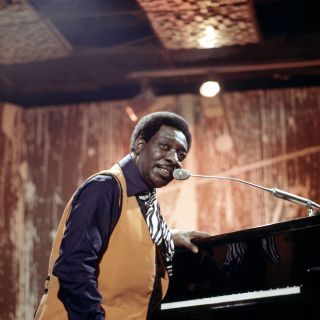
What was your initial role upon joining Decca Records in 1962?
“I suppose it was what you’d now call a ‘gofer’ – make the tea, go for this, go for that, take this up to the studio – and that was about as far as it went. It was a stuffy old place, full of stuffy old people, and I just felt that it needed an injection. I was far too young to ever say such a thing, but I just felt that there would come a time where Decca would finally become part of the real world, and I’d like to think, actually, that I did have some major part in that, along with my immediate boss, Hugh Mendl, who gave me enough rope to hang myself 10 times!”
How did you jump up the ladder so rapidly – becoming, in the process, one of the label’s youngest record producers?
“Really just by taking the opportunities given to me. I was such a blues freak and I was always out at night, up in London at any one of the half a dozen or so jazz and blues clubs there were then, listening to The Yardbirds and so forth and so on, and that’s how I got to meet Eric Clapton in the first place. I used to go see John Mayall at the Flamingo and Klooks Kleek, and we got to know each other, and that’s really how John Mayall got the renewed deal at Decca and that was how it all started.
From there, it just took its natural path. I did sign quite a lot of bands to Decca and had opportunities to sign others. I did the very first demos with the Spencer Davis Group, when they were called the Rhythm And Blues Quartette, which got rejected. I did the very first demos with The Yardbirds and that got rejected. And I did the demos with the Graham Bond Organisation and that got rejected, but subsequently the band got signed…”
Could you run through the early history of the Blue Horizon label?
“It came about as a result of having had a magazine called R&B Monthly, which was a fanzine which sold for about one and sixpence in those days, and then Neil Slaven and I started a label called Blue Horizon. We recorded Hubert Sumlin, who was Howlin’ Wolf’s guitarist, and did a couple of instrumentals at my parents’ house on an old reel-to-reel machine. We slapped it out as a ‘99 copies only’ release and it sold out in the space of about three weeks, so we started putting more singles out and then a couple of albums and it snowballed from there… to the point where Peter Green was going to leave John Mayall and form his own band, and he said to me, ‘I want you to produce our records and I want them out on Blue Horizon. I don’t want them out on Decca. I don’t want it on any other label but Blue Horizon.’”
And so then what happened?
“Well, I did the very first demos for what would become Fleetwood Mac and they got offered to Decca but they wouldn’t put the record out on the Blue Horizon label. Decca wouldn’t give us our own label so we offered it to CBS and CBS took it and took the label identity as well. Once that record came out and was something of a success, I got the dreaded phone call from the seventh floor at Decca, got called in and got rapped across my knuckles. They were saying, ‘You can’t produce records for other record companies’, so I said, ‘Well, I did offer it to you and you rejected it, so I took it somewhere else’. They said, ‘Okay, fair enough but you can’t do these two things at once so you’ll either have to resign or we’ll fire you’, so I said, ‘Right, I resign as of now.’ I went away and about three weeks later I came back and signed an independent production deal with Decca, and that’s how I continued on as an independent producer for Decca and also for other companies.”
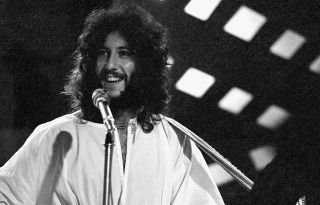
And Blue Horizon was now becoming a much bigger enterprise…
“Yes, the label became a commercial label but prior to that it had been nothing more than a collector’s only fanzine label. And of course, those records now are incredibly collectable. I mean, the very first album we put out was by a one man band called Dr Isaiah Ross from Mississippi and there were only 99 of those pressed and now, when they change hands on eBay – whenever there’s actually one to change hands – they go for in excess of £3,000, which is pretty extraordinary really.”
What do you remember about how the ‘Beano album’ came about in 1966?
“I’d been to see Mayall a number of times when Roger Dean [Mayall’s original guitarist] was with the band and stepped up my attendance when Eric was taken on board. That would have been at the time they signed a deal with Immediate Records, you know, with Tony Calder and Andrew Long Oldham, and they made I’m Your Witchdoctor and Telephone Blues as a single. And, after that record came out, I was at a gig with Mayall and he was moaning and saying, ‘Oh, I wish I’d never done this deal. It’s the wrong label. I shouldn’t be with these people. These people don’t understand the blues, they’re only interested in money and they want me to do other stuff and I’m not going to do it. I’m not going to make any more records for them and I really should be at Decca, especially as you now work at Decca. You’d be the ideal person, so can you get me a new deal at Decca?’ John had already made one record for Decca – John Mayall Plays John Mayall – and it was only a one record deal. There had been no options. So I went to Hugh Mendl, who was then my boss, and said, ‘We need to pay some attention to John Mayall’s Bluesbreakers, especially now he’s got this young ex-Yardbirds guitar player, Eric Clapton, who’s turning the blues scene completely upside down. He’s going to be a major force as a guitar player in the future. We need to nab this band while we’ve got the chance.’ And he said, ‘If you say so, go ahead and do it!’ So we negotiated the deal and I got involved as producer.”
How did you approach the production of the album?
“The whole plan was to make that record as live-sounding as we possibly could, and in those days that was not easy, because there were so many restrictions in terms of the way people used to do things. Everything was always, ‘Well, you must do it this way, you must do it that way, you must always have the microphone only so far from the actual cone of the amplifier and the amplifier must only be turned up to three or four for the optimum sound reproduction’ and all this kind of BS. I thought to myself, having been to see Mayall and Clapton perform live on many, many occasions – probably a dozen or more times prior to all this happening – I thought, ‘Well, this is going to be fun’, because Clapton plays so loud! And [Eric] had said, ‘This is going to be your biggest challenge, recording my sound!’ We didn’t realise how big a challenge it was going to be but, thank God, we had a young engineer who was to become a very famous producer, Gus Dudgeon, and he was ready for any challenge whatsoever. Sadly, he’s no longer with us but I can remember seeing his face the very first time Clapton plugged into the Marshall stack and turned it up and started playing at the sort of volume he was going to play. You could almost see Gus’s eyes meet over the middle of his nose, and it was almost like he was just going to fall over from the sheer power of it all! But he dealt with it in inimitable style…”
And how did he deal with it?
“Well, after an enormous amount of fiddling around and moving amps around, he made a little enclosed area against the wall so there was about three or four feet between the wall and the actual face of the amp, where the speakers were, and then he put microphones in it, and then put microphones above it. It was a right palaver but, at the end of the day, we got a sound that worked. I think all the solos, with the possible exception of Stepping Out, were done live. You can actually tell they were, because the drums suffer as a result of it. There was an enormous amount of guitar leaking in on the drum mics and, to a certain degree, drums on everything else. The studio wasn’t huge but nobody had had to deal with a band making that much noise before. But who cared – it was great!”
Did you get complaints from other Decca staff during the sessions?
“No, surprisingly enough! Lots of people came in during the course of the recording to have a listen and have a look, and all they could see was all these meters standing erect at the maximum position. They weren’t actually even moving because they were right at the top, you know, there was nowhere left for them to go. And Gus was furiously moving around trying to make compressors and limiters work to bring the levels down. It was just that nobody had had to deal with this sort of thing before. It was quite extraordinary really, it’s all credit to him that he managed to actually get it onto tape at the end of the day. And it doesn’t sound bad… It sounds rather good actually!”
What are your stand-out memories of your days working with Fleetwood Mac and Peter Green in the studio?
“Well, it was fun and it was enjoyable. It was never desperately hard work. Sometimes, they were a bit aggravating because they never took things very seriously. That was the biggest problem I had with them. It was all a bit of a game, you know, which was frustrating and annoying and they were really a bit childish about some things. I’ve always been fairly business-minded, and knuckle down to the job, and ‘Come on, let’s get on with it and then let’s get on with the next job’, but that was my only beef with them. I never had any beef with them about musical direction. The way they were going, they needed to find that out for themselves and, as Albatross emerged and then Man Of The World, I was very, very aware – as so many were – that they were heading in a completely new direction. Unfortunately, I never got the chance as producer to help form what happened afterwards and maybe, had I done so, maybe what happened would have been different. So perhaps everybody will say ‘Well, it’s a good job you weren’t there then!’ because maybe I would have changed their course of direction and what happened wouldn’t have happened… but whatever is meant to be is meant to be, so I don’t fuss about it too much.”
